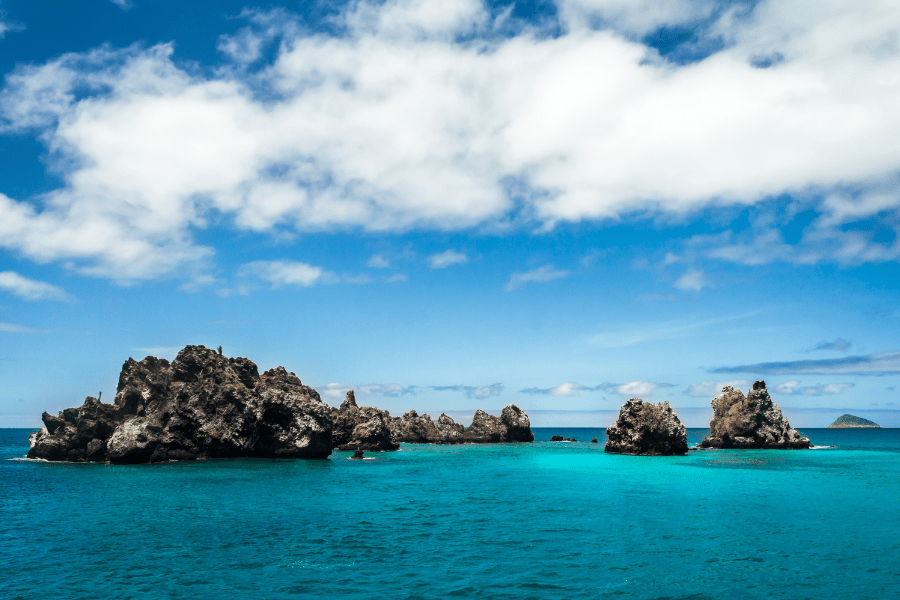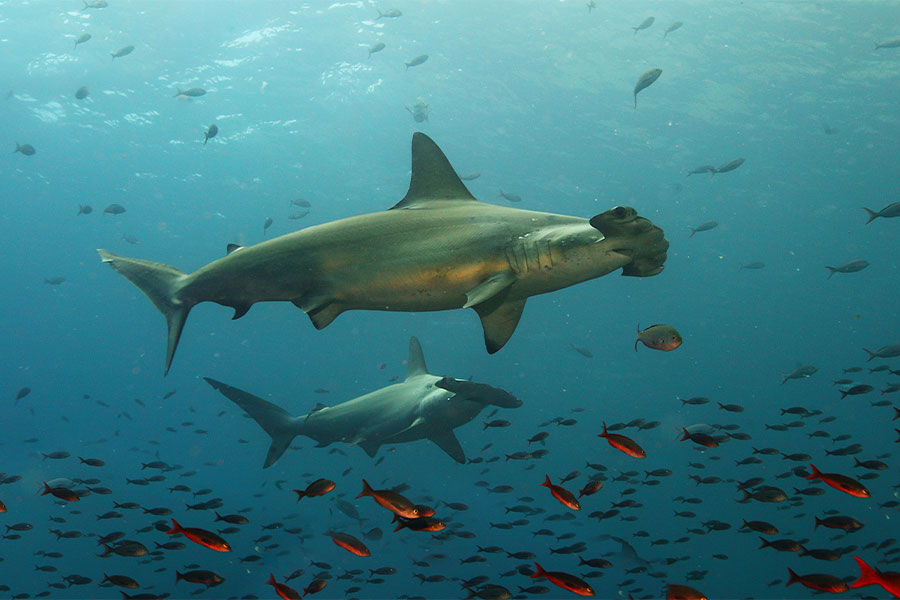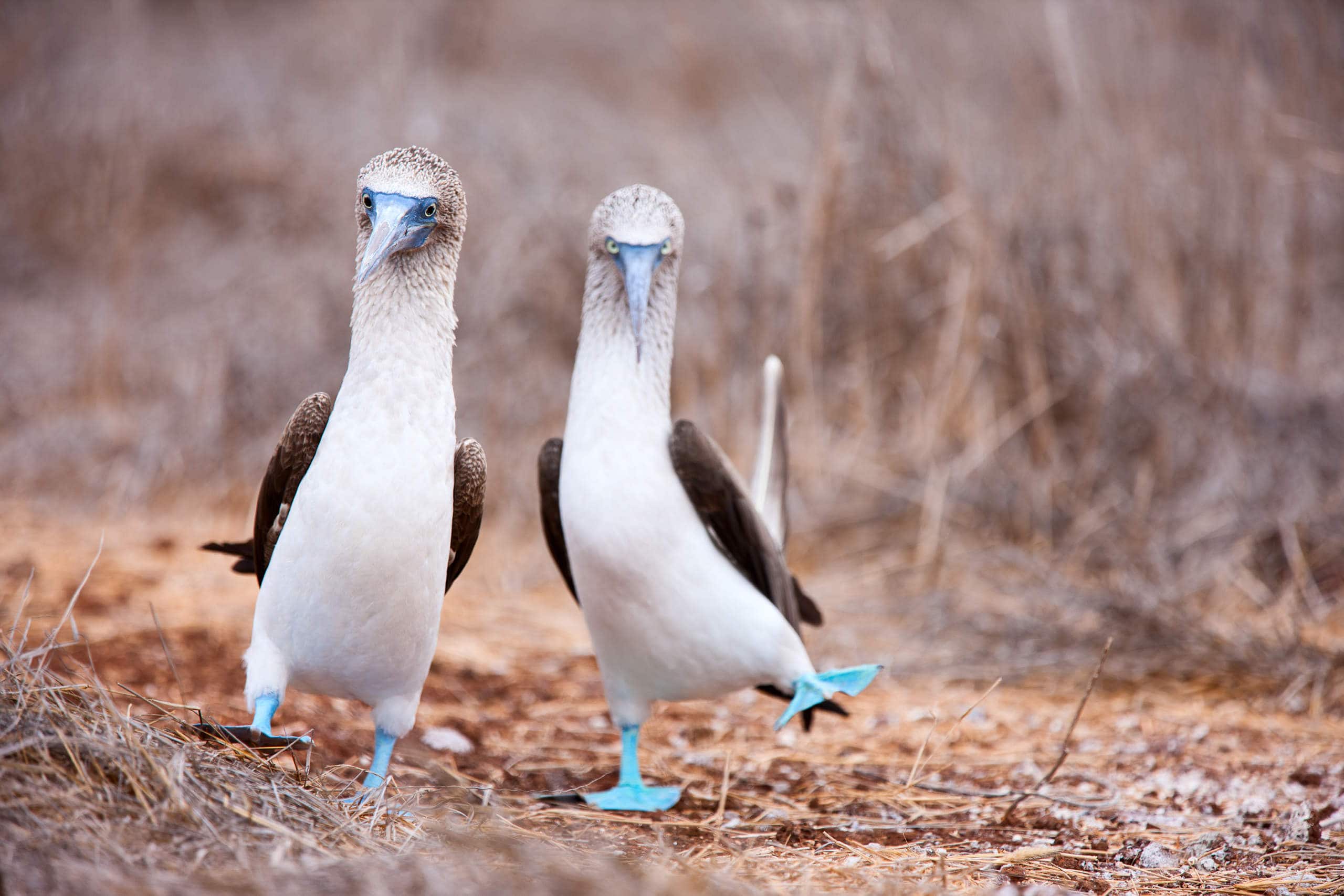
Floreana Island
Floreana Island, also known as Santa Maria Island, is a picturesque destination located in the southern region of the Galapagos archipelago. The island’s landscape is a product of its volcanic origins, with rugged terrain marked by volcanic cones, lava flows, and stunning beaches that are home to a diverse array of endemic land and marine life.
What makes Floreana Island truly unique from the rest of the Galapagos Islands is its rich human history. In the early 20th century, Floreana became a destination for a group eclectic individuals who sought a simpler way of life in this remote corner of the world. Two lovers, Friedrich Ritter and Dore Strauch, were among the first inhabitants of Floreana Island. The Wittmer family soon followed with Heinz and Margret Wittmer arriving in the 1930s. And so marks the first human settlement on Floreana. Today, the island is only one of four islands across the archipelago’s thirteen major islands with a human population. The Galapagos’ three other inhabited islands are Santa Cruz Island, San Cristobal Island, and Isabela Island.
Beyond its history of human settlement, Floreana Island offers a wealth of natural beauty teaming with wildlife. Those visiting the island on Aqua Mare’s West Galapagos itinerary will explore the key visitor sites of Post Office Bay, Cormorant Point, and the Devil’s Crown during their voyage.
Punta Cormorant (Cormorant Point)
Punta Cormorant, sometimes referred to as Cormorant Point, is a must-visit destination for nature lovers exploring the Galapagos Islands. This visitor site is known for its two contrasting beaches. One is an olivine beach where rays swim in the shallow waters. The other is a stunning white sand beach where green sea turtles nest and sea lions lounge in the sun.
The real highlight of Cormorant Point, however, is its large lagoon and community of resident Galapagos flamingos. This is one of the few places in the Galapagos where you can see these beautiful birds in their natural habitat and observe their curious nesting and mating rituals up-close. The lagoon is also home to other bird species such as white cheeked pintails, stilts, large-billed flycatchers, the Floreana mockingbird, and herons. In addition to a thriving bird population, Punta Cormorant is also home to a variety of Galapagos wildlife including marine iguanas, lava lizards, and the Galapagos penguin.
Bahia Post Office (Post Office Bay)
Bahia Post Office, or Post Office Bay in English, is a Floreana highlight and has a fascinating history that dates back to the 18th century. At the time, the Galapagos Islands were a popular stopover point for whaling ships traveling between the Americas and Asia. Sailors would often stay for weeks or months at a time, waiting for the winds to change or for their ships to be repaired.
Often away from home for months or even years, the sailors established a trust-based post office system comprising of a single wooden barrel. The idea was simple: sailors passing through the Galapagos would leave letters in the barrel for other sailors heading in the same direction to pick up and deliver. In this way, messages and news could be shared between sailors and their families and friends back home.
Today, visitors to the Galapagos can still participate in this charming tradition by leaving post cards in the same barrel and sorting through the post to find letters to hand-deliver as they travel onwards. The site continues to connect people from all over the world, just as it did back in the 18th century.
The Devil’s Crown

Just off the shore of Floreana Island, in the midst of the open ocean, rises a jagged ring of rock formations known as the Devil’s Crown — arguably one of the best snorkeling sites in the Galapagos. This sunken volcanic crater is now a vibrant coral reef home to king angelfish, sting rays, white-tipped reef sharks, and a wealth of other aquatic creatures. If you are lucky, you may even come across a hammerhead shark, sea turtle, or a Galapagos penguin cruising through the currents beneath you.

Where to next: Isabela Island
After an eventful day on Floreana and a night of sailing, Aqua Mare will anchor off the western coast of Isabela Island — the biggest and youngest island in the Archipelago. From above, Isla Isabela bears a distinctive seahorse shape which was influenced by the merging of six shield volcanoes: Alcedo, Cerro Azul, Darwin, Ecuador, Sierra Negra, and Wolf — all of which are still active bar Ecuador, making it the most volcanically active place on earth.

Known for its thriving wildlife populations, visitors can expect up-close experiences with an exotic array of endemic reptiles, land birds, sea birds, and marine life. Examples include blue-footed boobies, giant tortoises, iguanas, Galapagos penguins, and the infamous Darwin’s finches.

For Aqua Expeditions travelers embarking on the ultimate Galapagos experience, you will explore Isabela’s key visitor sites including Tagus Cove, once a favorite anchorage spot for pirates and whalers; Darwin Lake, a body of water three times saltier than the sea; and Punta Moreno, a sprawling pahoehoe lava flow.
Book an expedition on Aqua Mare to discover the elusive wildlife and dramatic volcanic landscapes of the Galapagos Archipelago. Curated with exclusivity and personalized service enabled in mind, the yacht is the only one in the Galapagos Islands to have a one-to-one crew to guest ratio. Plan your trip now and feel free to reach out to our Expeditions Consultant with any questions you may have.



